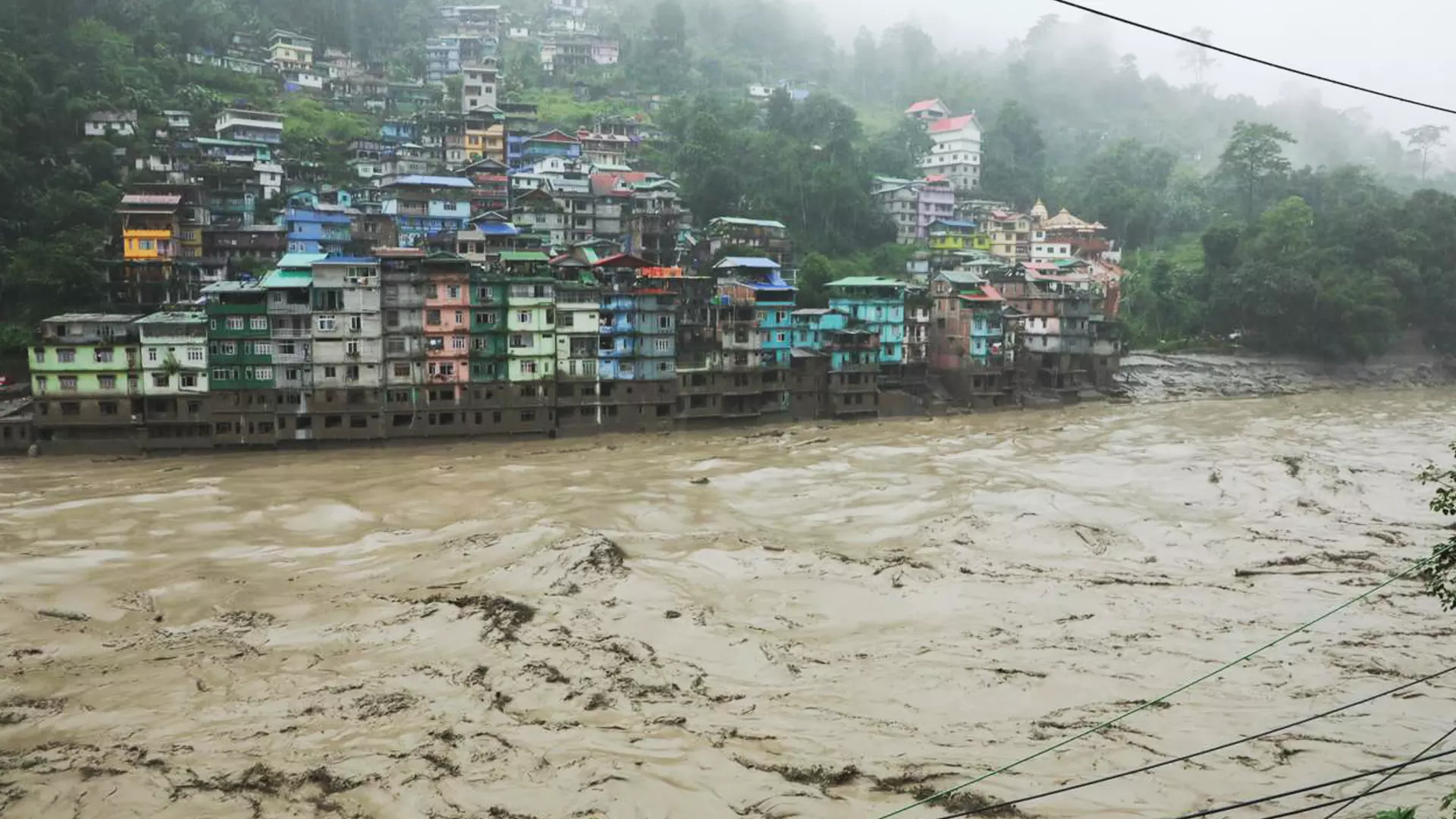
Glacial blunder: Jal Shakti ministry drags feet on oversight mechanism, funds

In early October, a glacial burst led to flash floods in the South Lhonak Lake in North Sikkim. Scores of people died and more went missing (presumed dead) while thousands of others were displaced. This flash flood also destroyed the 1200 MW hydropower dam built over the Teesta river.
According to experts, a Glacial Lake Outburst Flood (GLOF) in South Lhonak was the cause of this devastation. GLOF is a sudden release of water from a lake that is fed by a melting glacier. A statement by the National Disaster Management Authority (NDMA) on the Sikkim disaster said that excess rainfall, besides the GLOF, triggered the flood.
Now, as questions swirl over whether hydropower projects should at all be built on the fragile Himalayan rivers, we now know that an early warning system installed at the Teesta dam did not function that night, exacerbating the GLOF effects. Glacier experts had, in any case, warned earlier against building any dam over the Teesta, predicting GLOF events in the fast-melting Himalayan glaciers. They had also underlined the critical importance of taking mitigation measures, in case dams were indeed built. These measures included setting up fool-proof early warning systems, siphoning off water from Himalayan lakes and conducting strict monitoring of GLOF sites in every region.
Inadequate budgetary resources
But two months after the Sikkim disaster, the Jal Shakti Ministry - the nodal ministry tasked with maintenance of all the dams in the country - is still dragging its feet over creating a better oversight mechanism for safeguarding against future disasters. The ministry has told a Parliamentary Standing Committee that a steering committee has been set up under the chairmanship of the Secretary, Department of Water Resources, to look into issues including research on glaciers. This, when the Ministry of Earth Sciences and other experts are pushing for a national-level research centre to study glaciers and an oversight body to coordinate all activities on Himalayan glaciers. Also, this steering committee was constituted in the first half of 2023, with its first meeting in May - so there appears to be little additional effort in setting up a better oversight mechanism for Himalayan glaciers post the Sikkim tragedy.
In its report titled ‘Glacier Management in the Country – Monitoring of Glaciers/Lakes Including Glacial Lake Outbursts leading to flash floods in the Himalayan region’, the parliamentary panel has said that a mere steering committee falls way short of recommendations.
“It is way short of what the National Disaster Management Authority (NDMA) ‘Guidelines on Management of Glacial Lake Outburst Flood’ have proposed. The said guidelines have suggested that a national-level Centre for Glacial Research, Studies and Management (CGRSM) be established by the Ministry of Jal Shakti under the umbrella of the National Institute of Hydrology (NIH), Roorkee as a premier centre with state-of-the-art facilities, which would eventually grow into a national centre of excellence,” the panel said in its latest report.
Forget any institutional mechanism to study Himalayan glaciers, the Jal Shakti ministry has not even allocated enough budgetary resources for glacier studies, with the panel now asking it to allow the steering committee to have an exclusive budgetary allocation. The ministry has merely referred to the Ministry of Earth Sciences allocating Rs 6 crore per year to research on glaciers till 2026.
On yet another recommendation by the parliamentary panel - to maintain the green cover of valleys associated with glaciers to reduce the impact of climate change - again, the Jal Shakti ministry has been found wanting.
NDRF severely constrained
The National Disaster Relief Force, a specialised rescue and response force mandated to respond to national and man-made disasters, works with severe constraints. The panel has pointed out that the NDRF owns no heavy equipment like earthmovers or drilling machines and has to depend on local authorities to provide both, the machines and their operators, in times of disaster. During the Chamoli (Uttarakhand) disaster in February 2021, the melting of a Himalayan glacier resulted in flash floods, killing hundreds and destroying two power plants.
NDRF could not quickly reach the disaster site because it has no dedicated aircraft for emergency travel and here too, the elite force has to depend on state governments or the Indian Air Force for transport in times of national disasters.
In its reply, the Jal Shakti ministry has said that the NDRF has not been provided with heavy equipment since it is difficult to maintain; the reason for not providing the force with a dedicated fleet of aircraft is pretty much along the same lines, with manpower and resource crunch also thrown in for good measure by the ministry. The parliamentary panel has asked the ministry to take up its suggestions with the Home Ministry for improved and timely response by the NDRF.

